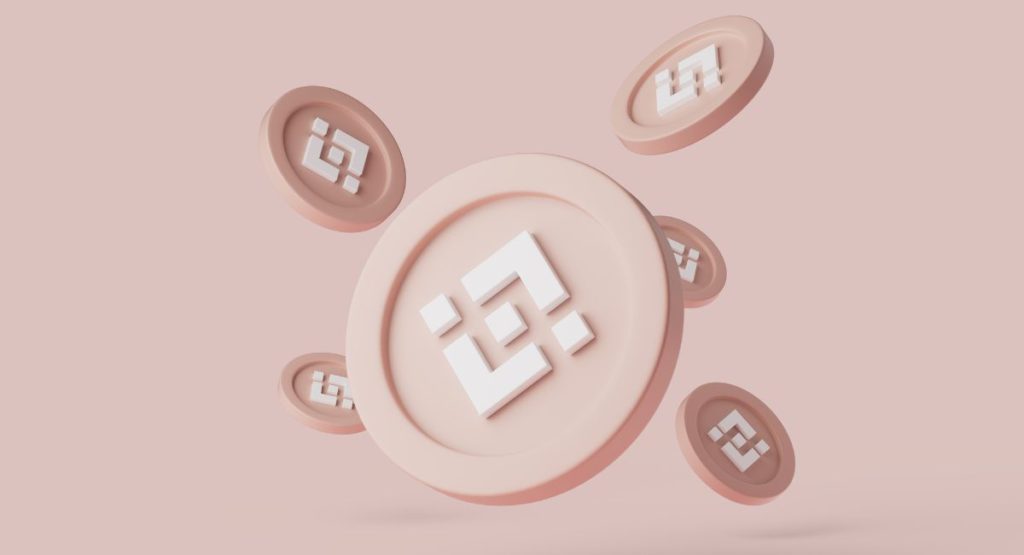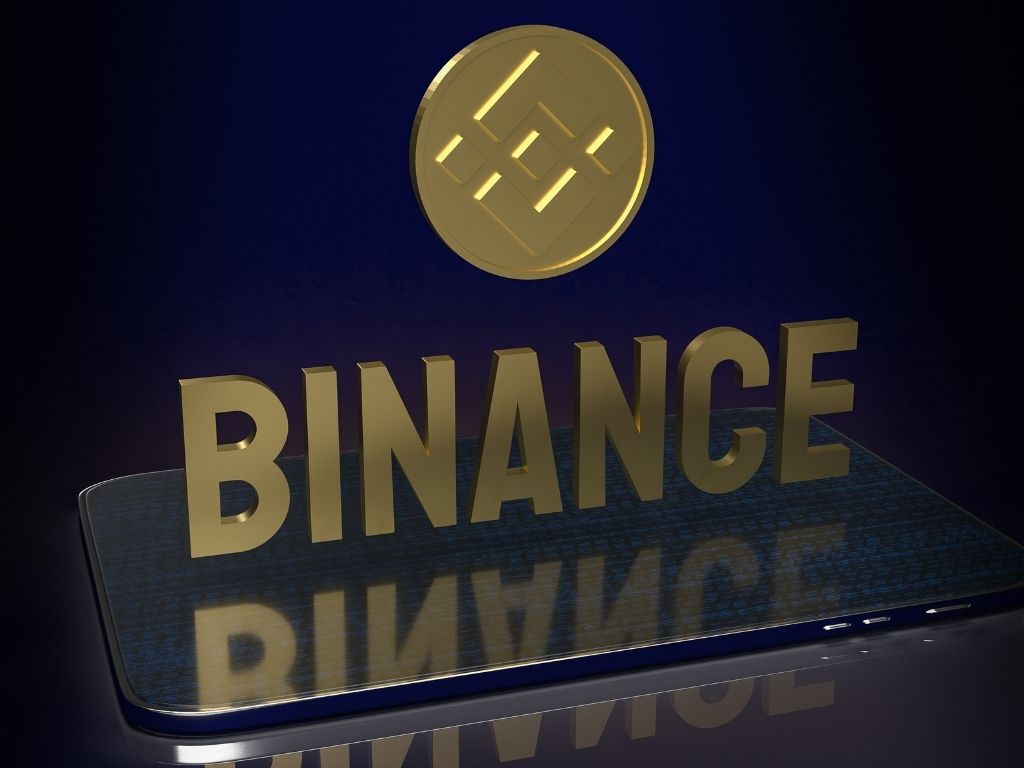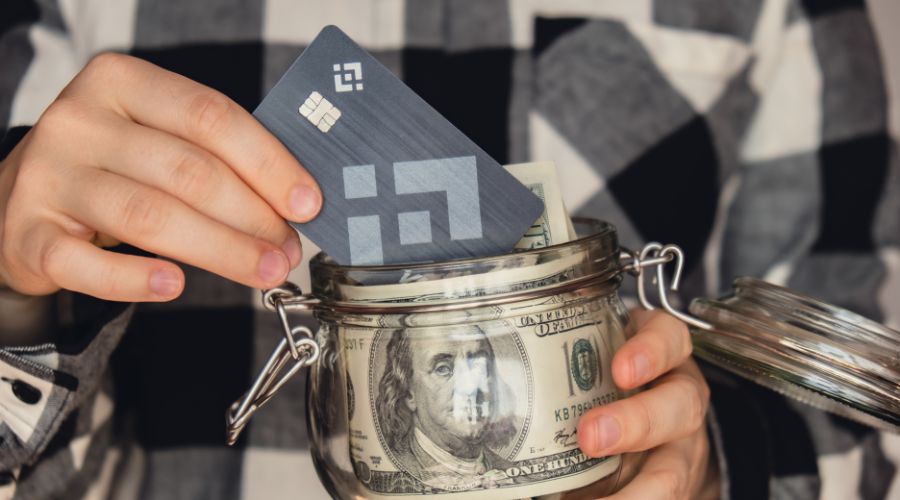Top 9 Ways Binance Raise Its Funding And Became A Worldwide Trusted Brand For Digital Asset

Binance, a name synonymous with the world of cryptocurrency and blockchain, has become a trailblazer in the financial industry. From its inception to its current status as one of the largest cryptocurrency exchanges globally, the story of Binance is a testament to strategic funding, innovation, and navigating the complexities of the ever-evolving crypto landscape.
How Did Binance raise its funding?

Binance, one of the world’s leading cryptocurrency exchanges, was founded in 2017 by Changpeng Zhao, popularly known as CZ. The platform quickly gained prominence for its user-friendly interface, extensive range of supported cryptocurrencies, and commitment to providing a secure and efficient trading environment.
Here’s a detailed look at the founding and early funding stages of Binance:
1. Founder:
- Changpeng Zhao, or CZ, has a background in finance and technology. Before founding Binance, he worked at notable companies in the cryptocurrency space, including Blockchain.info and OKCoin. CZ’s experience in the industry and his vision for a user-centric cryptocurrency exchange laid the foundation for Binance.
2. Foundation and Launch:
- Binance was officially founded in July 2017, with CZ at the helm as the CEO. The platform was designed to address some of the shortcomings of existing cryptocurrency exchanges, offering a seamless trading experience with low fees, a wide range of supported cryptocurrencies, and advanced trading features.
3. Initial Coin Offering (ICO):
- Binance’s early funding strategy involved conducting an Initial Coin Offering (ICO) to raise capital for development. In July 2017, Binance issued its native cryptocurrency, Binance Coin (BNB), as part of its ICO. BNB was created as an ERC-20 token on the Ethereum blockchain, adhering to the widely used token standard.
4. Binance Coin (BNB):
- Binance Coin (BNB) served a dual purpose within the Binance ecosystem. Initially, it was issued as part of the ICO to raise funds. However, BNB quickly found utility within the Binance platform itself. Users could use BNB to pay for trading fees on the exchange, providing a discount and incentivizing the use of BNB within the platform.
5. ICO Success:
- The Binance ICO was notably successful, attracting significant attention from the cryptocurrency community. The ICO raised funds swiftly, contributing to the rapid development and expansion of the Binance platform. The success of the ICO also contributed to the establishment of Binance as a major player in the cryptocurrency exchange industry.
6. Community Building:
- The ICO not only served as a means of fundraising but also played a crucial role in community building. BNB token holders became stakeholders in the success of Binance, creating a community of users who were financially invested in the platform. This community engagement was pivotal in establishing a loyal user base.
7. Rapid Growth and Development:
- With the funds raised from the ICO, Binance experienced rapid growth and development. The platform focused on providing a seamless trading experience, introducing new features, expanding its range of supported cryptocurrencies, and continuously improving security measures.
8. Innovations and Partnerships:
- Binance continued to innovate and stay ahead in the rapidly evolving cryptocurrency industry. The platform introduced innovations such as the Binance Launchpad, a token launch platform for new projects. Additionally, strategic partnerships and collaborations were formed to enhance the services offered by Binance.
9. Evolution of BNB:
- Over time, BNB evolved beyond its initial role in trading fee discounts. Binance introduced various use cases for BNB, including participation in token sales on the Binance Launchpad, payment for various services, and even the development of the Binance Smart Chain (BSC), a parallel blockchain to Binance Chain.
Binance’s early funding strategy, driven by a successful ICO and the creation of Binance Coin (BNB), played a crucial role in the platform’s rapid ascent to becoming one of the leading cryptocurrency exchanges globally. The emphasis on community engagement, continuous innovation, and strategic partnerships has contributed to Binance’s sustained success in the dynamic and competitive crypto landscape.
Also, read – Regulating the Risks of Artificial Intelligence: Binance Disables Trading Of Privacy Tokens
Global Expansion and Market Dominance of Binance:

Binance, since its inception in 2017, has pursued an ambitious strategy of global expansion, aiming to establish itself as a leading cryptocurrency exchange on a worldwide scale. The platform’s success in achieving market dominance is attributed to several key factors, including strategic decision-making, adaptability to regulatory landscapes, and a commitment to providing localized services.
1. Early Focus on Global Markets:
- From its early days, Binance exhibited a global mindset. While many cryptocurrency exchanges initially focused on specific regions, Binance aimed to cater to users worldwide. This approach allowed the platform to tap into diverse markets and user bases.
2. Broad Range of Supported Cryptocurrencies:
- Binance differentiated itself by offering a vast array of supported cryptocurrencies for trading. This extensive selection attracted users interested in exploring and trading a diverse range of digital assets, contributing to the platform’s popularity globally.
3. User-Friendly Interface and Advanced Features:
- Binance’s user-friendly interface and a suite of advanced trading features appealed to both novice and experienced traders. The platform’s commitment to providing a seamless and efficient trading experience contributed to its rapid adoption across different regions.
4. Adaptability to Regulatory Environments:
- One of the critical factors in Binance’s global success was its ability to adapt to varying regulatory environments. The cryptocurrency landscape is subject to diverse regulatory frameworks in different countries. Binance implemented compliance measures and engaged in dialogues with regulatory authorities to operate legally in various jurisdictions.
5. Launch of Localized Platforms:
- Binance took a proactive approach to cater to specific markets by launching localized platforms. These platforms often featured language support, localized customer service, and payment options tailored to the preferences of users in specific regions. Binance’s commitment to providing a user-friendly experience in local languages contributed to its widespread adoption.
6. Acquisition of Local Exchanges:
- Binance expanded its global reach through strategic acquisitions of local cryptocurrency exchanges. These acquisitions facilitated a quicker entry into new markets and helped Binance tap into existing user bases. By integrating acquired platforms into the Binance ecosystem, the exchange strengthened its position in various regions.
7. Launch of Fiat-to-Crypto Gateways:
- Binance facilitated onboarding new users by introducing fiat-to-crypto gateways. The ability to buy cryptocurrencies directly with traditional fiat currencies made it easier for users worldwide to access the cryptocurrency market through the Binance platform.
8. Introduction of Binance Coin (BNB):
- The introduction of Binance Coin (BNB) as the native cryptocurrency of the Binance platform played a strategic role in its global expansion. BNB not only provided utility within the platform but also served as an attractive investment option for users globally.
9. Innovation and Diversification:
- Binance continued to innovate and diversify its offerings. The launch of the Binance Launchpad for token sales, the introduction of staking and savings products, and the creation of the Binance Smart Chain (BSC) were among the initiatives that added new dimensions to the Binance ecosystem.
10. Community Engagement: – Binance actively engaged with its global community through initiatives such as community meetups, educational programs, and partnerships. The exchange’s commitment to fostering a strong and supportive community contributed to its sustained growth and adoption.
11. Strategic Partnerships: – Binance forged strategic partnerships with various organizations, including blockchain projects, payment providers, and financial institutions. These partnerships not only expanded Binance’s reach but also enhanced the overall ecosystem by integrating with complementary services.
12. Launch of Binance Academy: – Binance Academy, an educational platform launched by Binance, played a role in spreading awareness and knowledge about blockchain and cryptocurrencies globally. This initiative contributed to Binance’s reputation as an educational resource in the crypto space.
13. Binance Launchpad: – Binance Launchpad, an initial token offering platform, allowed users to participate in token sales of promising blockchain projects. This feature attracted attention from users globally and showcased Binance’s role as a facilitator of new and innovative projects.
Through a combination of these strategies and initiatives, Binance successfully established itself as a dominant force in the global cryptocurrency exchange industry. The platform’s adaptability, commitment to compliance, and continuous efforts to enhance user experience have contributed to its widespread adoption and market leadership. It remains a key player in shaping the future of the cryptocurrency ecosystem.
Meet the brand new #Binance Web3 Wallet!
Simple, convenient and secure.
Discover more 👇
— Binance (@binance) November 8, 2023
Launch of Binance Coin (BNB) and Tokenomics:

Binance Coin (BNB) is a cryptocurrency that was introduced as part of the Binance exchange’s initial coin offering (ICO) in 2017. Its launch marked a significant development in the cryptocurrency space, introducing a novel concept in tokenomics that went beyond being a mere medium of exchange. BNB was designed as the native utility token of the Binance platform, offering a range of benefits to its holders within the Binance ecosystem.
1. ICO and BNB Creation:
- Binance conducted its ICO from July 25 to July 27, 2017, raising funds for the development of the exchange. During the ICO, Binance issued a total of 100 million BNB tokens (although it was later reduced to 200 million) on the Ethereum blockchain using the ERC-20 token standard.
2. Utility Token Concept:
- BNB was not created solely as a means of fundraising but also as a utility token within the Binance ecosystem. Its utility extended beyond being a medium of exchange, introducing a range of benefits for users who held and used BNB within the Binance platform.
3. Trading Fee Discounts:
- One of the key features of BNB is its role in providing trading fee discounts to users on the Binance exchange. BNB holders can choose to use their BNB balance to pay for trading fees, receiving a discount in the process. This incentivizes users to hold and use BNB for their trading activities.
4. Binance Launchpad Participation:
- BNB holders gained the ability to participate in token sales on the Binance Launchpad. The Launchpad is a platform where new blockchain projects conduct their initial token offerings. BNB holders can use their tokens to subscribe to these token sales, providing an additional use case for BNB within the Binance ecosystem.
5. Ecosystem Expansion:
- As the Binance ecosystem expanded, so did the use cases for BNB. It became a versatile asset, used not only for trading fee discounts and Launchpad participation but also for various activities within the Binance platform, including staking, savings products, and more.
6. Quarterly BNB Burns:
- To manage the overall supply of BNB and increase its scarcity, Binance initiated a quarterly token burn mechanism. Binance uses 20% of its profits to buy back and burn BNB tokens until 50% of the total supply is removed from circulation. This mechanism aims to provide a deflationary aspect to BNB’s tokenomics.
7. Expansion to Binance Smart Chain (BSC):
- With the launch of the Binance Smart Chain (BSC), BNB’s utility expanded beyond the Binance exchange. BSC is a parallel blockchain to Binance Chain, and BNB serves as the native cryptocurrency for both chains. BNB on BSC is used for various decentralized finance (DeFi) applications, further diversifying its use cases.
8. BNB Staking:
- Binance introduced staking services for BNB, allowing users to earn rewards by staking their BNB tokens. Staking involves locking up BNB for a specific period, and users receive staking rewards as an incentive for contributing to the network’s security.
9. BNB as a Tradable Asset:
- Beyond its utility within the Binance ecosystem, BNB has become a notable cryptocurrency in its own right. It is listed on various cryptocurrency exchanges, and users can trade BNB against other cryptocurrencies or fiat currencies.
10. Community Engagement: – The success of BNB is closely tied to the active engagement of the Binance community. Binance actively involves the community in decision-making processes and regularly seeks feedback, fostering a sense of ownership and participation among BNB holders.
11. Continued Innovation: – Binance continues to innovate and introduce new features, enhancing the overall utility of BNB. This includes the integration of BNB in various decentralized applications (DApps), further expanding its use cases.
12. Impact on Cryptocurrency Markets: – BNB’s success has contributed to its recognition as one of the top cryptocurrencies by market capitalization. Its impact on the broader cryptocurrency markets highlights the importance of utility-driven tokenomics and the potential for native platform tokens to become significant players in the crypto space.
The launch and success of Binance Coin (BNB) exemplify how a well-thought-out tokenomics model, combined with a focus on utility and community engagement, can lead to the widespread adoption and recognition of a cryptocurrency. BNB’s journey from an ICO token to a multifaceted utility token and a prominent asset in the crypto markets reflects the dynamic nature of the blockchain industry.




























































